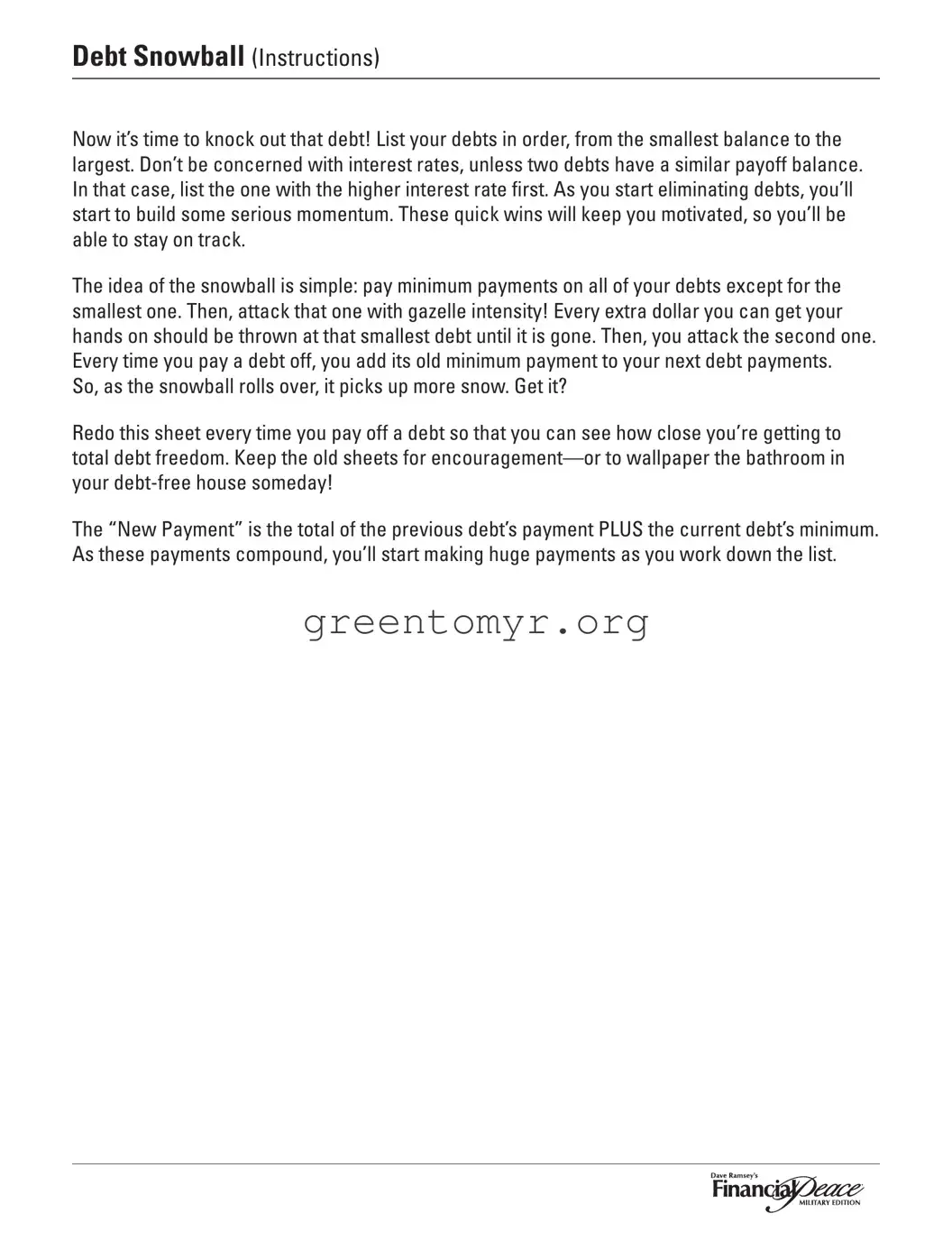DEBT SNOWBALL (Instructions)
Now it’s time to knock out that debt! List your debts in order, from the smallest balance to the largest. Don’t be concerned with interest rates, unless two debts have a similar payoff balance. In that case, list the one with the higher interest rate first. As you start eliminating debts, you’ll start to build some serious momentum. These quick wins will keep you motivated, so you’ll be able to stay on track.
The idea of the snowball is simple: pay minimum payments on all of your debts except for the smallest one. Then, attack that one with gazelle intensity! Every extra dollar you can get your hands on should be thrown at that smallest debt until it is gone. Then, you attack the second one. Every time you pay a debt off, you add its old minimum payment to your next debt payments.
So, as the snowball rolls over, it picks up more snow. Get it?
Redo this sheet every time you pay off a debt so that you can see how close you’re getting to total debt freedom. Keep the old sheets for encouragement—or to wallpaper the bathroom in your debt-free house someday!
The “New Payment” is the total of the previous debt’s payment PLUS the current debt’s minimum. As these payments compound, you’ll start making huge payments as you work down the list.


